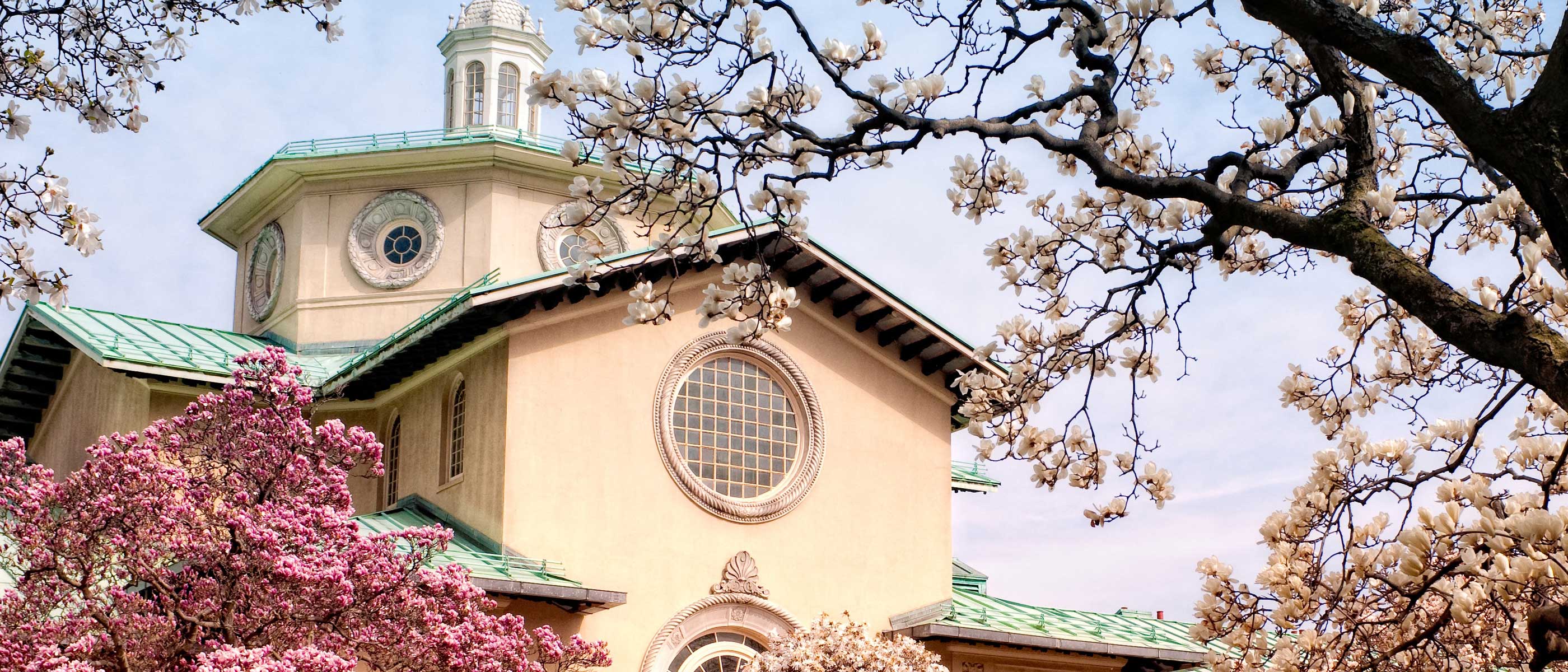Your search for "" has 2977 results.
-
Education and Activities
Garden Apprentice Program
The Garden Apprentice Program (GAP) at Brooklyn Botanic Garden is a great way for teens to learn about urban agriculture and the environment while working in one of the most exciting public gardens in the world! Apprentices can work their way up the four-tier program.
-
Articles
Kamala Sankaram Asks What We Mean By “Nature”
Kamala Sankaram Asks What We Mean By “Nature”
-
Calendar: Events
Power of Trees Tour
Power of Trees Tour
-
Calendar: Events
Sustainability at BBG Tour
Sustainability at BBG Tour
-
Calendar: Events
Fall Secrets to Having a Healthy Street Tree Bed Next Spring
Fall Secrets to Having a Healthy Street Tree Bed Next Spring
-
Calendar: Events
Indigenous Wisdom: Saving Trees and Beyond
Indigenous Wisdom: Saving Trees and Beyond
-
Articles
Sara Perl Egendorf on Building New Soils
Sara Perl Egendorf on Building New Soils
-
Calendar: Events
Climate Week NYC: Art and the New Climate Reality
Climate Week NYC: Art and the New Climate Reality
-
Calendar: Events
Nature Walks with Bradley Klein: Autumn Bird Migration
Nature Walks with Bradley Klein: Autumn Bird Migration
-
Articles
Asters and Goldenrods: Ecological Superstars
Asters and Goldenrods: Ecological Superstars
-
People
Ronen Gamil
Ronen Gamil is a former gardener of the Brook Garden at Brooklyn Botanic Garden, and has worked as a public horticulturist in NYC since 2014.
-
Articles
Saving Tomato Seeds
Saving Tomato Seeds
-
Articles
Greenmarket Cofounder Bob Lewis Digs Up Garden Memories
Greenmarket Cofounder Bob Lewis Digs Up Garden Memories
-
Calendar: Events
President’s Circle: The Power of Trees Autumn Tree Tour
President’s Circle: The Power of Trees Autumn Tree Tour
-
Calendar: Events
Verbal Description Tour of Gold Rose and Fragrance Garden
Verbal Description Tour of Gold Rose and Fragrance Garden
-
Articles
Kamala Sankaram: Community Soundscape
Kamala Sankaram: Community Soundscape
-
Articles
What’s the Latest on Spotted Lanternflies?
What’s the Latest on Spotted Lanternflies?
-
Education and Activities
Urban Advantage Program
-
Calendar: Events
Dissected Tree Installation
Dissected Tree Installation
-
Articles
Street Tree Care 101
Street Tree Care 101
-
People
Jibreel Cooper
Jibreel Cooper is the Community Program Manager at Brooklyn Botanic Garden. They oversee the Greenest Block in Brooklyn contest, the Making Brooklyn Bloom conference, and 25 houseplants.
-
Photo Sets
Greenest Block National Grid Leadership in Sustainable Practices Award 2023
Greenest Block National Grid Leadership in Sustainable Practices Award 2023
-
Calendar: Events
Reception for Jean-Michel Othoniel: The Flowers of Hypnosis
Reception for Jean-Michel Othoniel: The Flowers of Hypnosis
-
Photo Sets
Greenest Block Residential 2023
Greenest Block Residential 2023
-
Photo Sets
Greenest Block Best Community Garden Streetscape 2023
Greenest Block Best Community Garden Streetscape 2023
-
Photo Sets
Greenest Block Commercial 2023
Greenest Block Commercial 2023
-
Photo Sets
Greenest Block 2023 Storefront
Greenest Block 2023 Storefront
-
Photo Sets
Greenest Block Street Tree Beds Winners 2023
Greenest Block Street Tree Beds Winners 2023
-
Photo Sets
Greenest Block Best Window Box 2023
Greenest Block Best Window Box 2023
-
Photo Sets
Greenest Block 2023 Commendation
Greenest Block 2023 Commendation
-
Community Greening
Greenest Block in Brooklyn 2023
2023 Contest Winners Congratulations to all participants! #GreenestBlockInBrooklyn Learn More About the Contest › 2023 Residential Participants View all the residential blocks that participated in the 2023 Greenest Block in Brooklyn contest. Click the map points to see the names of the registered block associations. 2023 Residential Category …
-
Articles
The Buzz Behind Your Summer Tomatoes
The Buzz Behind Your Summer Tomatoes
-
Plants in Bloom
Spiral-Ginger
/img/uploads/lightbox/spiral-flag_MS_52260890438.jpg
-
Plants in Bloom
Peacock Ginger
/img/uploads/lightbox/peacock-ginger_MS_52259903142.jpg
-
Plants in Bloom
Miniature Rose
/img/uploads/lightbox/miniature-rose_MS_52304842873.jpg
-
Plants in Bloom
Giant Dutchman’s-Pipe
/img/uploads/lightbox/giant-dutchmans-pipe_MS_52260893213.jpg
-
Plants in Bloom
Black Huckleberry
/img/uploads/lightbox/black-huckleberry_MS_52327456259.jpg
-
Articles
Finding Agency in a Time of Crisis
Finding Agency in a Time of Crisis
-
Articles
Studying Nature’s Calendar with BASE
Studying Nature’s Calendar with BASE
-
People
Liz Otte
Liz Otte is the BASE partnership manager at Brooklyn Botanic Garden.
-
Articles
A Rainbow Lights Up the Annual Border
A Rainbow Lights Up the Annual Border
-
Calendar: Events
Artist in Residence Performance
Artist in Residence Performance
-
Visit
Artist in Residence: Kamala Sankaram
From June through September 2023, Brooklyn Botanic Garden hosts Kamala Sankaram as artist in residence. Drawing inspiration from trees in our collection, tree care and caretakers, and the symbolism of trees as places of gathering, shelter, and culture, Sankaram is creating work to be presented in September. Public Programs

